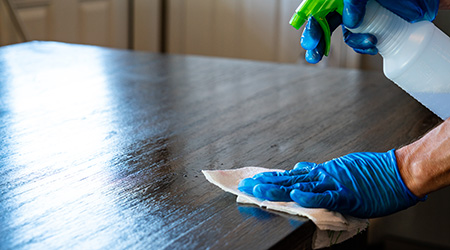Indoor air quality was a popular concern among many at the beginning of 2021 as people examined the impacts of cleaning rates and COVID-19 transmission. Studies found that the frequency of cleaning and disinfecting in indoor spaces had caused alarming spikes in rates of asthma and other respiratory conditions.
Early in the pandemic, data showed that frequent cleaning and disinfecting were among the best methods to prevent the spread of COVID-19. As a result, cleaning and disinfecting procedures were increased to match recommended guidelines. Butoveruse of chemicals does not just create poor chemistry performance. It also introduces more chemicals into our daily environments. Concentrates and dilution control devices can save money, reduce environmental impact, and increase worker safety.
A chemical dispensing system can ensure accurate and efficient dispensing while preventing leaks, spills, drips, and workplace contamination and protecting end users. It also helps eliminate costly mixing, measuring, and dispensing mistakes by untrained personnel.
Although these systems are typically highly accurate, their use does not replace the need to implement quality control measures to monitor proper dilution. An investigation revealed several flaws in the dispensing system. To prevent potential issues with the improper dilution of concentrated cleaning and disinfectant products, managers should conduct quality control testing as part of a preventive maintenance program.
This effort includes the use of chemical indicator strips or test strips. These strips are intended to indicate whether there might be a glaring issue with dispensing, such as water quality, water pressure, and proportioning tip malfunction. It is important to clarify that these strips are not pass/fail and are, therefore, not absolute. The color coding also means the results might be subjective.
Managers should engage disinfectant vendors and suppliers in a periodic validation of the accuracy of the dilution control center. For managers who need an idea for their 2022 EVS Quality Assurance program, why not make the accuracy of in-use disinfectants one of the priorities?

 Code Compliance Isn't Enough for Healthcare Resilience
Code Compliance Isn't Enough for Healthcare Resilience Ribbon Cutting Marks First Phase Completion for New Montefiore Einstein Facility
Ribbon Cutting Marks First Phase Completion for New Montefiore Einstein Facility Brooks Rehabilitation Launches 3 New Major Construction Projects
Brooks Rehabilitation Launches 3 New Major Construction Projects Joint Commission Standards: What Updates Matter Most?
Joint Commission Standards: What Updates Matter Most? Swinerton Completes Construction at Atlanta's Grady Hospital
Swinerton Completes Construction at Atlanta's Grady Hospital